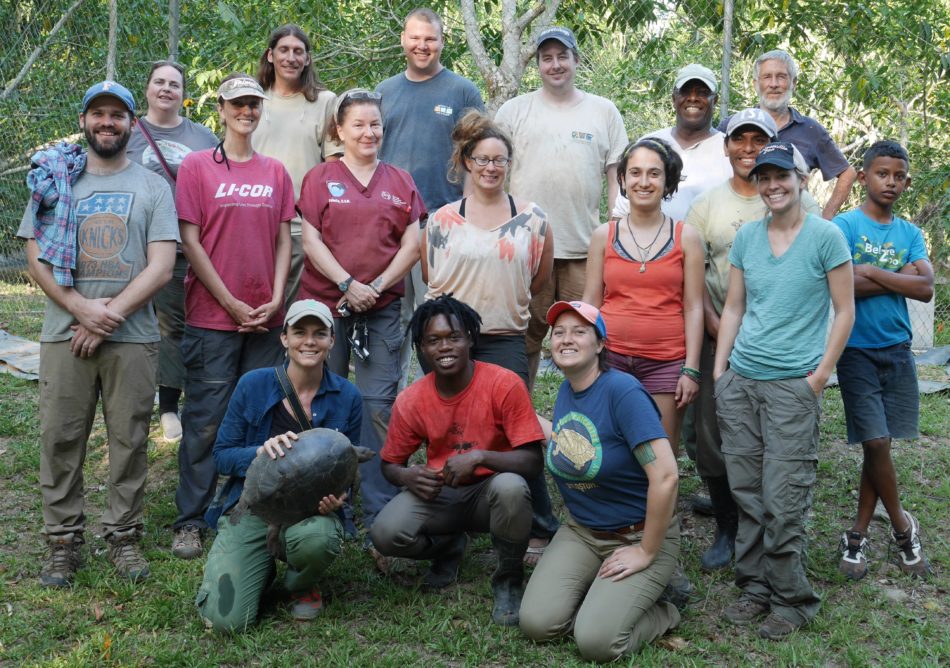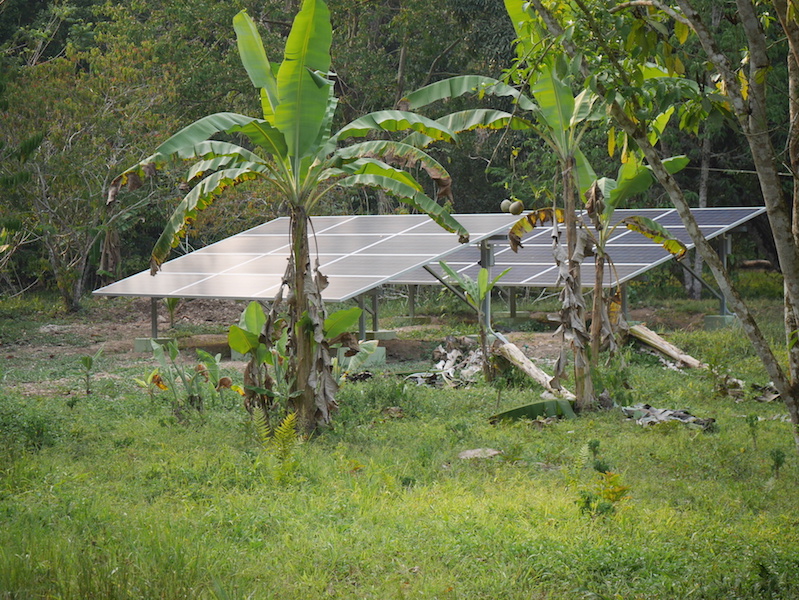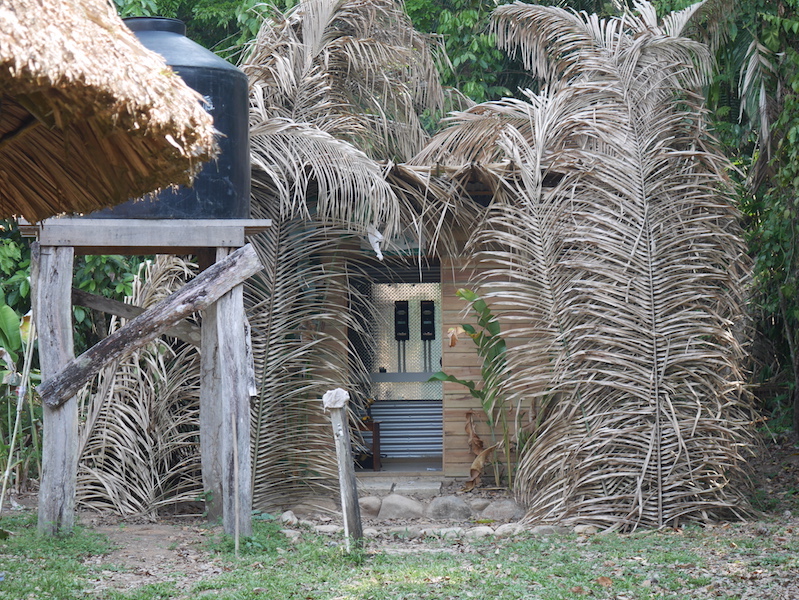Hicatee Health Check

This year’s first Hicatee health check took place on April 4th and 5th at the Hicatee Conservation & Research Center (HCRC).
The HCRC, a joint effort between BFREE and the Turtle Survival Alliance (TSA), is a captive-breeding facility for the critically endangered Central American River Turtle (more commonly known as Hicatee). Captive-breeding offers the potential to produce offspring for release and repatriation into areas that have experienced widespread declines or extirpation. Additionally, specimens maintained in captivity provide valuable opportunities for studying aspects of the species’ reproductive biology, diet and behavior that would otherwise be difficult to observe or study in the field.
The April health checks assessed the nearly 100 hicatee turtles in captivity at the HCRC. First, hatchlings 9 months to 2 years old followed by the 45 adults from each of the two ponds were weighed, measured (plastrons, carapace, tail, and nails), checked for overall physical conditions, and reproductive evaluations were performed.
The team consisted of Dewey Maddox, Veterinary nurse, and Emily Fyfe, Senior Herpetology Keeper, from the Jacksonville Zoo and Gardens, Robert Mendyk, Curator of Herpetology at the Audubon Zoo, Dr. Isabel Paquet-Durand, founder and director of the Belize Wildlife & Referral Clinic, Dr. Raymond Carthy, Nichole Bishop and Dr. Sean Sharp from the University of Florida, Vanessa Kilburn from Toucan Ridge Ecology & Education Society, and Jacob Marlin, Heather Barrett, Tom Pop, Jaren Serano and Tyler Sanville of BFREE, as well as volunteers Will Jones and Tybren Vialdores and Aimee Mitchell.
BFREE aims to complete bi-annual health checks on the turtles housed at the HCRC to help further inform and influence conservation strategies and actions. The next health check is scheduled for September 2018.
Currently, Dermatemys mawii is classified as Critically Endangered (facing an extremely high risk of extinction in the near future) by the International Union for Nature and Natural Resources (IUCN), listed as endangered under the provisions of the U.S. Endangered Species Act (U.S. Fish and Wildlife Service), and listed on Appendix II of the Convention on International Trade in Endangered Species of Wild Fauna and Flora (CITES).
Special note for our friends in the US: If you find yourself near The Jacksonville Zoo and Gardens, be sure to visit the Emerald Valley Aviary where you can see three hicatee, the only place in the US where this rare and unusual turtle is on exhibit.


